MIRABILIS
Mirabilis
Riv. ex L., Sp. Pl. ed.1: 177. 1753; Gen. Pl. 5: 82. 1754; Bailey, Stand. Cyclop. Hort. 4: 2056. 1919; Webb in Tutin et al., Fl. Eur. 1: 111. 1964; Hutch., Gen. Flow. Pl. 2: 270. 1967; Fl. China @ eFloras.org 5: 432; Spellenberg, Fl. North Amer. @ eFloras.org 4: 40; Fl. Pak. @ eFloras.org p. 1.
Annual or perennial herbs. Leaves opposite, +/- equal in each pair, petiolate or upper ones sessile. Flowers in axillary cymes, each flower surrounded by a 5-fid calyx-like involucre of bracts; involucral bracts erect, not enlarged after flowering. Flowers actinomorphic, bisexual, hypogynous, opening in afternoon, fragrant or not. Perianth funnelform, constricted beyond the ovary; limb showy, variously coloured, expanded, plicate, distally 5-lobed, deciduous. Stamens 3-6, usually exserted; filaments adnate to tube at base. Carpel 1, ovary superior, ovoid or ellipsoid, unilocular with a solitary basal ovule; style 1, as long as stamens or longer, exserted; stigma capitate. Fruit (Anthocarp) globose or ovoid, coriaceous, ribbed or tuberculate, without sticky glands.
57 species
Mirabilis jalapa
Mirabilis jalapa
L., Sp. Pl. ed.1: 177. 1753; Bailey, Stand. Cyclop. Hort. 4: 2056. 1919; Webb in Tutin et al., Fl. Eur. 1: 111. 1964; Nair, Fl. Bashahr. Himal. 232. 1977; Dhaliwal & Sharma, Fl. Kullu Dist. 541. 1999; Kaur & Sharma, Fl. Sirmaur 532. 2004; Singh & Sharma, Fl. Chamba Dist. 583. 2006; Fl. China @ eFloras.org 5: 432; Fl. Pak. @ eFloras.org p. 3.
Annual herb up to 1 m tall. Stem erect, much branched, dichotomous, cylindric, thickened at nodes, grooved, glabrous to minutely pubescent. Leaves 2.5-12(-15) cm x 1.5-6(-9) cm, in unequal pairs, ovate, ovate- lanceolate or ovate- triangular, subcordate, rounded or truncate at base, sometimes slightly oblique, acute or acuminate at apex, subentire or sinuate, puberulous; petioles 0.8-4.5 cm long, hairy. Flowers actinomorphic, bisexual, hypogynous (appears epigynous), monochlamydeous, purple, red or yellow, subsessile, in clusters of 4-5 at apex of branches; pedicels ca. 2 mm long. Each flower surrounded by a 5-fid calyx-like involucre of bracts; involucres 1-1.3 cm long in flowers, elongating up to 1.5 cm afterwards, campanulate, 5-lobed, lobes triangular-ovate, acute to acuminate, glabrous, persistent. Perianth constricted beyond ovary; basal part enclosing ovary persistent; upper part funnelform, purple, red or yellow; perianth tube 2-4 cm long, pubescent outside, widening abruptly at apex into wide limb, up to 3.5 cm across, plicately 5-lobed; perianth opening in late afternoon, closing next morning. Stamens 5 (or 6), exserted; filaments up to 4.5 cm long, lower half adnate to perianth tube, basally connate and surrounding the ovary; anthers globose to subglobose, ca. 1 mm x 1.5 mm, bithecous, longitudinal dehiscence. Ovary ca. 1.5 mm long, ovoid, unilocular with solitary basal ovule; style reddish, exserted beyond stamens; stigma capitate. Fruit (Anthocarp) black, globose or ovoid, ca. 9 mm x 5-8 mm, 5-ribbed, tuberculate.
Common Names: Four O’clock, Beauty-of the-Night, Marvel of Peru, Gul Abbas; Gulbakshi (Hindi)
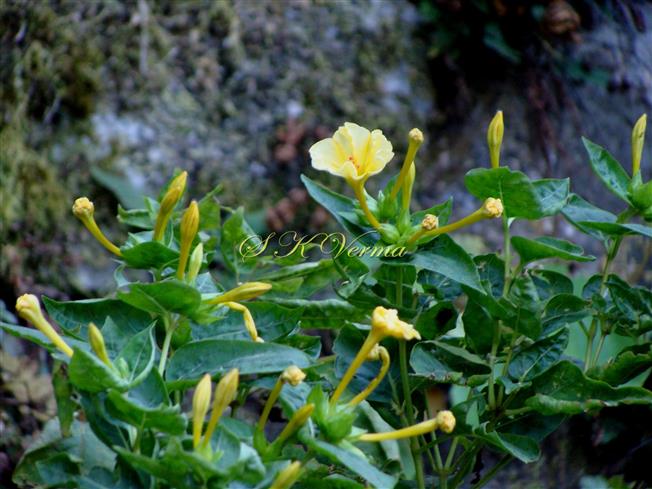
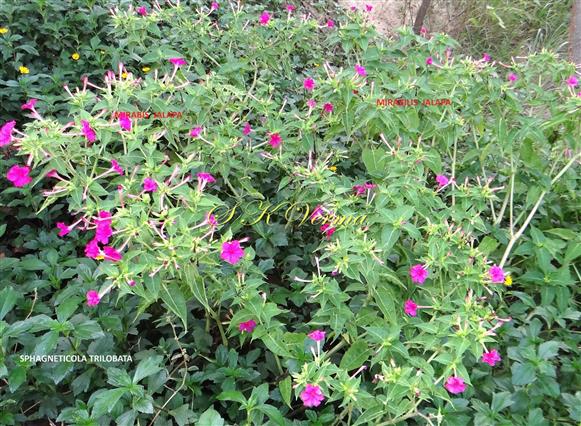
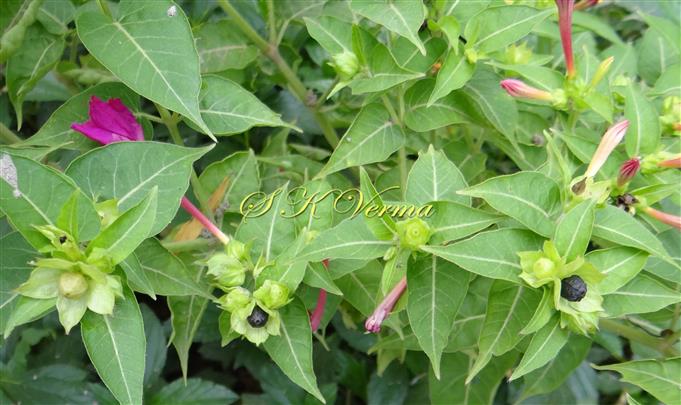
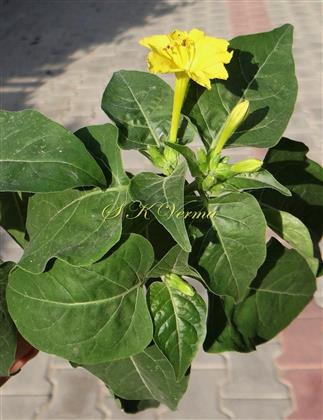
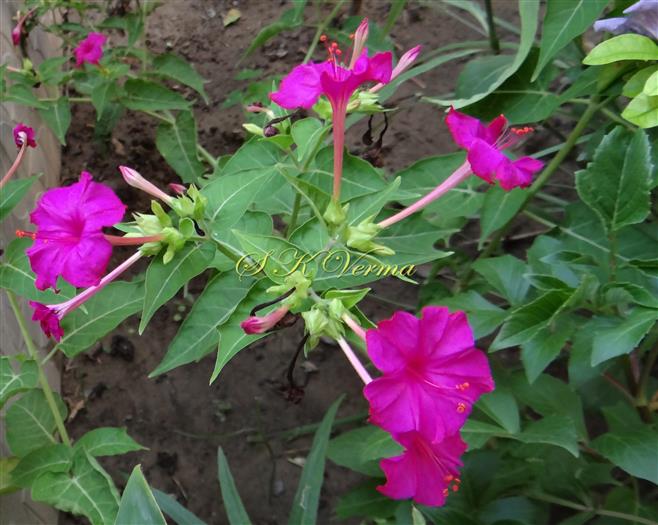
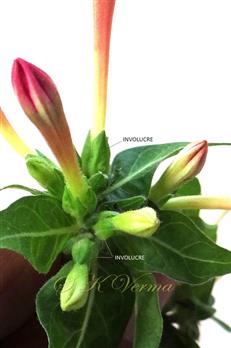
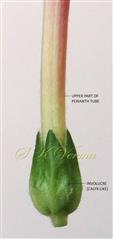
-DSC00920.jpg)
 showing 6 stamens and a Pistil-DSC00507.jpg)
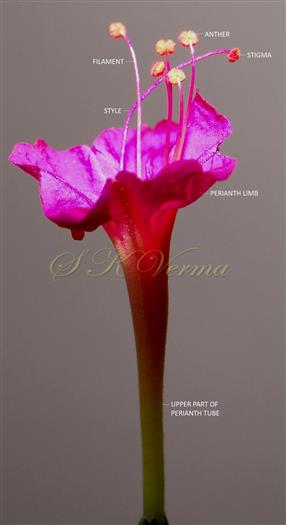
 with 5 stamens and stigma-DSC08913.jpg)
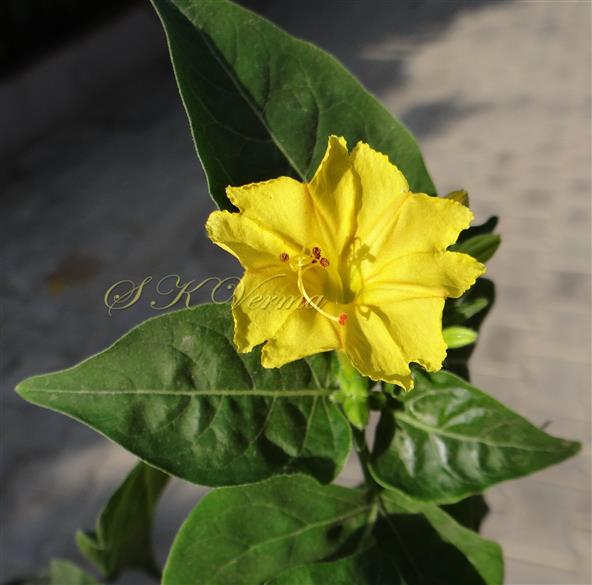

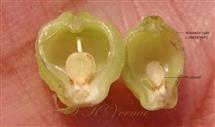
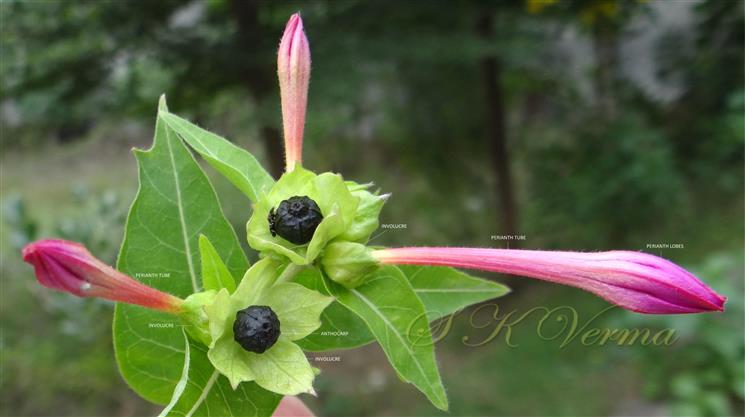
 and Involucre-DSC00874.jpg)
-DSC00908.jpg)
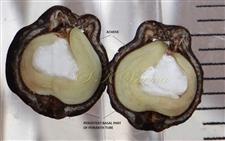








-DSC00920.jpg)
 showing 6 stamens and a Pistil-DSC00507.jpg)

 with 5 stamens and stigma-DSC08913.jpg)




 and Involucre-DSC00874.jpg)
-DSC00908.jpg)
